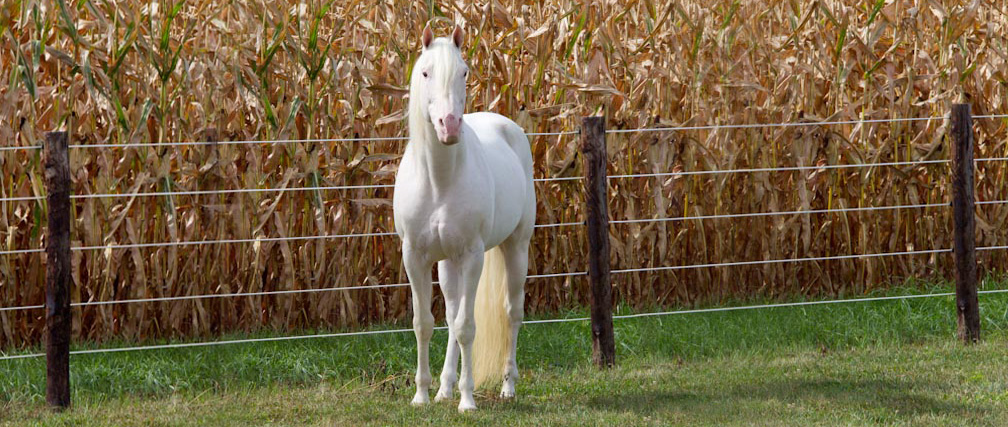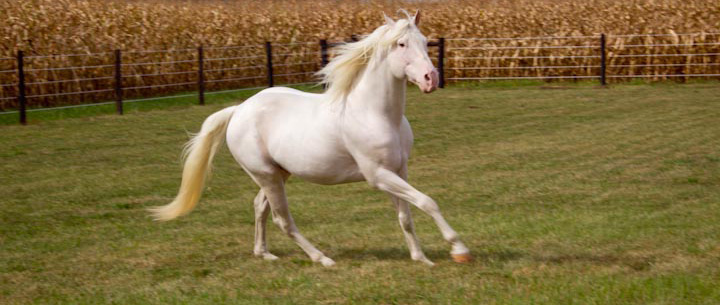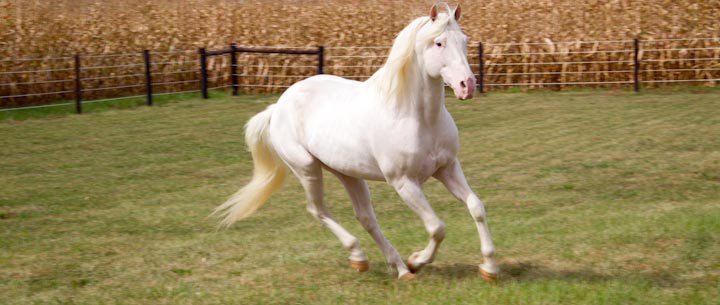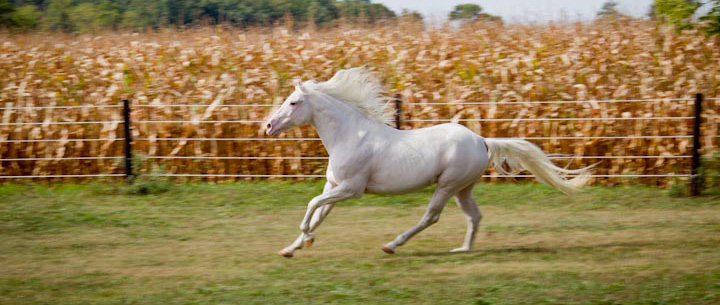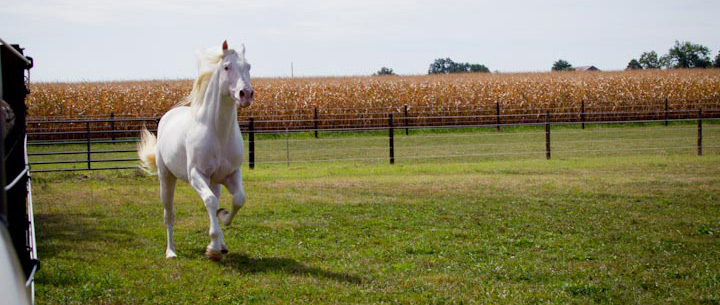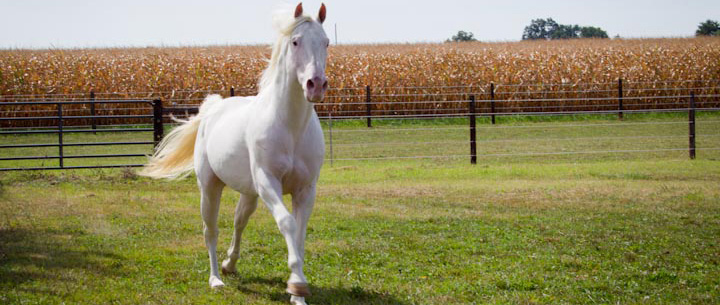
Google the Nez Perce Indians and you’re sure to find a wealth of information crediting them with developing the Appaloosa into the strong, versatile, intelligent, and mild mannered horse it is today. No one really knows for certain if the Nez Perce legend is fact or fiction created by the ApHC. There are many valid theories of the origin of the beautiful and colorful Appaloosa!
No matter which theory makes sense to you, over the years the Appaloosa became diluted with more crosses to grade and other breeds – some good horses and good breeds, but still other breeds. While this was good for breeders looking to put Appaloosa characteristics including color, versatility, personality, and stamina on their best horses, many would agree it was not good for the authentic blood Appaloosa.
Many beautiful and famous Appaloosa Horse Club (ApHC) Foundation (F#) Appaloosas selected by the ApHC founders are from unknown and/or unrecorded stock that existed long before records were kept. This does not mean they were all mixed breeds but simply that their ancestors are undocumented. ApHC founders recognized that this special breed deserved accurate records and a future but failed to restrict continued outcrossing once the foundation stock was established.
The ApHC now limits acceptable crosses to Quarter Horses, Thoroughbreds, and Arabians which produce Appaloosas commonly known as modern ApHC Appaloosas. Not all ApHC Appaloosas are modern crosses; neither are they all foundation bred. Many of today’s modern ApHC Appaloosas are mostly QH, with or without the LP characteristics and spots the Appaloosa is best known for. JBS Sham Again produced ApHC performance Appaloosas with sound minds, color, and characteristics for breeders wanting to reintroduce the older legendary bloodlines from a well conformed athletic stallion into their modern ApHC Appaloosas. His racing lines and agility also made him ideally suited as a producer of spotted athletes, and registry with Sportaloosa International.
The Foundation Appaloosa Horse Registry (FAHR) began with closed books of the original and F# horses selected by the founders of the ApHC, effectively closing the ApHC books when many believe it should have happened. With a high concentration of ApHC F# ancestors, JBS Sham Again’s foals may also be eligible for FAHR registration and become part of the FAHR purebred program based on a high % of ApHC F# blood. To produce a FAHR eligible foal, mares bred to Sham must be 87.5% ApHC Foundation or better as calculated by FAHR. Being a by blood registry, FAHR embraces the solid Appaloosa as well as those with LP color patterns. FAHR Appaloosas must also be registered with the ApHC.
Sham’s foals may also be eligible for Foundation Appaloosa Association (FAA) registration, yet another foundation Registry opened recently and also based on the ApHC F# horses. FAA Appaloosas must also be registered with the ApHC.
Beginning with the ApHC Appaloosas available today, both modern and foundation, the International Colored Appaloosa Association (ICAA) was created to provide a landing spot for breeders wanting to protect and preserve the Appaloosa as a breed with a unique color pattern but not necessarily FAHR or FAA eligible. ICAA seeks to create Appaloosas of eight generations and more of ONLY ApHC and ICAA Appaloosas which they have defined as an ICAA Purebred. Appaloosas participating in this program are identified with ICAA F#’s and are the foundation of the future ICAA purebred registry. ICAA F#’s are in no way connected to ApHC, FAHR, or FAA Foundation programs or F#’s. ICAA Appaloosas must also be registered with the ApHC unless both parents are registered with ICAA.
With ApHC registered parents and grandparents, JBS Sham Again is an ICAA F2 stallion. He produced ICAA F3 foals which can produce F4 foals, and so on. Bred to the right mares, he could also have produced FAHR, FAA, and Sportaloosa eligible foals. Sham is also registered with the Colorado Ranger Horse Association (CRHA), a very active bloodline registry; his foals are also eligible for the CRHA Registry. Sunshine Appaloosas is a proud member of Real Appaloosa Breeders, a group of dedicated breeders committed to the authentic Appaloosa no matter how it’s registered.
I personally prefer the highly concentrated Appaloosas with bright color patterns whether from a high percent of legendary ApHC F# crosses (FAHR and FAA) or from multiple generations of modern and foundation ApHC crosses (ICAA). I refuse to acknowledge any Registry as better or worse than another. They are simply different with different roots, different requirements, and different ways of achieving similar but still very different goals. There is much talk about a purebred Appaloosa but no documented definition is universally accepted among scientists. No registry can decide what is purebred in another. They all record and protect the pedigrees of Appaloosas should the ApHC fail or become simply a mixed breed Registry of quality horses with spots.
JBS Sham Again made a meaningful contribution to any Registry without sacrificing one for another, including the modern ApHC outcrosses looking for speed and agility with spots. That is not to say that speed and agility with spots cannot be found in the FAA, FAHR, ICAA, and Sportaloosa horses because they most certainly can be! The only thing JBS Sham Again did not attempt to do was produce a modern halter QH with spots. Sham was built to perform and stamped his foals with color, agility, and a love for speed … and often white ear tips!
Appaloosa characteristics (coat color pattern /spots, white sclera, mottled skin, striped hooves, and sometimes a sparse mane and tail) are associated with the LP gene and can be passed to anything from donkeys and mules to miniature horses and ponies. While these may be cute novelties, they are NOT Appaloosas. In an attempt to compromise and surrender a losing battle, some Appaloosa breeders have begun to unofficially accept appaloosa (a) as a generic term to describe anything with LP characteristics, and Appaloosa (A) as the registered blood breed recorded by any of the officially recorded and recognized registries. A true registered Appaloosa may or may not exhibit any combination of LP characteristics.
